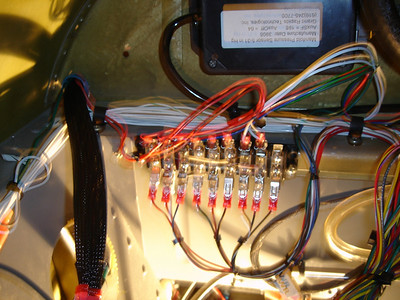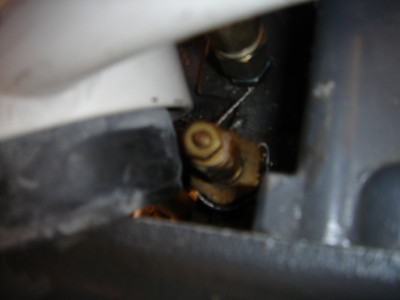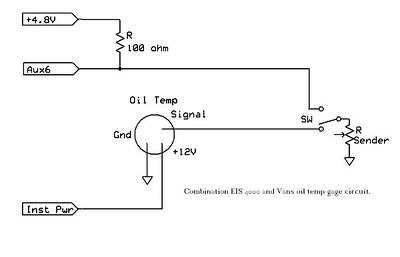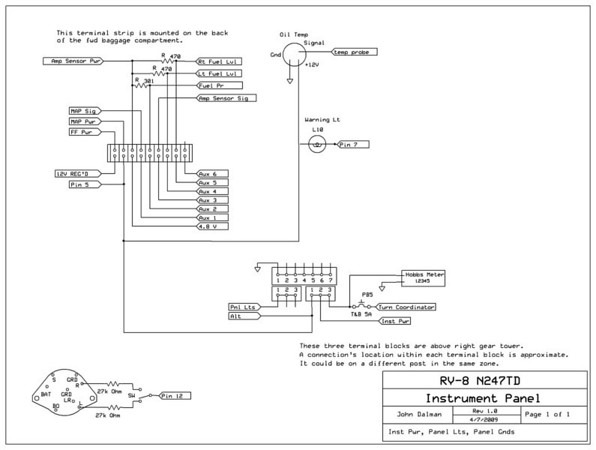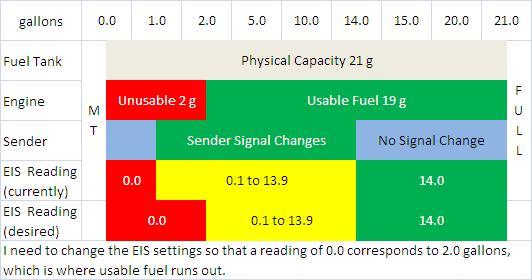Bubblehead
Well Known Member
As long as I'm working through retrofittting an EIS-4000 in my RV-8 I thought I'd put some notes in a thread. Hopefully it will help others.
As background, in October, the 180 hp IO-360 engine in my RV lost considerable power on takeoff but a safe return to the home airport was made. Compression checks were depressing, and it turned out three of four cylinders had gone south. Perhaps "toes up" is a better term. It's 24 degrees outside so "going south" sounds pretty good. The fourth cylinder was not in too good of shape either so after reading postings on VAF, talking to friends and knowledgeable A&Ps I decided to order 4 new ECI experimental cylinders with 9:1 compression ratio pistons.
Of course, one thing lead to another. The front oil seal was leaking so we pulled that out and will install a new one, the original cylinder baffle system was pretty kludged up so a new one was ordered from Vans, and the magnetos had 500+ hours on them, so off they went for a checkup, followed by a big check. A few other things were found like 2 loose screws on the starter solenoid and a missing nut on the starter.
One thing I realized when the engine lost power on takeoff and while I headed back for the safety of the runway is that my engine instrumentation was adequate but could be better. Perhaps a better system could have predicted the problems with the cylinders so that a potential emergency landing could have been avoided. The plane has the standard Vans instrumentation - oil pressure, oil temperature, voltmeter, with CHT and EGT selector switches to monitor different cylinders. THe tachometer was a cable driven type and manifold pressure was monitored by a bourdon tube style instrument instead of the electronic version Vans sells now.
The major problem was having to switch between cylinders. I got lazy. Once I found the hotest cylinder I kept the switches on that cylinder and rarely if ever monitored the other cylinders. It was tough to spot changes and to do a good job at leaning too. The end result is problems on the three failing cylinders were not noticed until they caused a significant loss of power.
My bank account took a major hit on the cylinders (about $4k) and the magneto ($800) so going to even a low cost a EMS like Dynons was not a realistic approach. I ended up buying a EIS-4000 from Grand Rapids Technology through SteinAir. Have you guys heard of them?
Now that you have the background, on following posts I'll give some info on the retrofit.
As background, in October, the 180 hp IO-360 engine in my RV lost considerable power on takeoff but a safe return to the home airport was made. Compression checks were depressing, and it turned out three of four cylinders had gone south. Perhaps "toes up" is a better term. It's 24 degrees outside so "going south" sounds pretty good. The fourth cylinder was not in too good of shape either so after reading postings on VAF, talking to friends and knowledgeable A&Ps I decided to order 4 new ECI experimental cylinders with 9:1 compression ratio pistons.
Of course, one thing lead to another. The front oil seal was leaking so we pulled that out and will install a new one, the original cylinder baffle system was pretty kludged up so a new one was ordered from Vans, and the magnetos had 500+ hours on them, so off they went for a checkup, followed by a big check. A few other things were found like 2 loose screws on the starter solenoid and a missing nut on the starter.
One thing I realized when the engine lost power on takeoff and while I headed back for the safety of the runway is that my engine instrumentation was adequate but could be better. Perhaps a better system could have predicted the problems with the cylinders so that a potential emergency landing could have been avoided. The plane has the standard Vans instrumentation - oil pressure, oil temperature, voltmeter, with CHT and EGT selector switches to monitor different cylinders. THe tachometer was a cable driven type and manifold pressure was monitored by a bourdon tube style instrument instead of the electronic version Vans sells now.
The major problem was having to switch between cylinders. I got lazy. Once I found the hotest cylinder I kept the switches on that cylinder and rarely if ever monitored the other cylinders. It was tough to spot changes and to do a good job at leaning too. The end result is problems on the three failing cylinders were not noticed until they caused a significant loss of power.
My bank account took a major hit on the cylinders (about $4k) and the magneto ($800) so going to even a low cost a EMS like Dynons was not a realistic approach. I ended up buying a EIS-4000 from Grand Rapids Technology through SteinAir. Have you guys heard of them?
Now that you have the background, on following posts I'll give some info on the retrofit.






